10 Must-See Attractions and Activities in Daegu

In the southeast of South Korea, nestled among rolling hills and scenic mountains, lies Daegu, the country’s fourth-largest city. While it may not boast the same grand attractions as other major cities, its unique charm and vibrant culture make it worth a visit. One of the main reasons travelers include Daegu in their itineraries is the chance to explore the famous Haeinsa Temple. If you’re planning to stop in this fascinating city and want to know everything to see and do in Daegu, this article will guide you through its 10 must-see attractions.
* We’ve also included a wealth of useful information at the end to help you plan your visit.
Daegu offers a unique blend of tradition and modernity, where Catholic churches stand side by side with traditional markets, and contemporary innovations coexist with historical sites. While it may not be the favorite stop for every traveler—especially those who have ya already visited Seoul—there is no shortage of interesting attractions to keep you entertained during your stay. Logistically, Daegu serves as an excellent base for visiting the Haeinsa Temple, one of the most significant temples in South Korea, where you can engage in the Temple Stay program. So, are you ready to explore the city? Let’s dive in!
If you only have a single day to explore Daegu, consider taking the city tour bus. It’s a convenient way to hit the city’s main attractions and experience some of the best things to do in Daegu.
Discovering Daegu's Cultural Gems
1. Daegu National Museum
Start your journey at the Daegu National Museum, where you can delve into the city’s rich history. The museum showcases an impressive collection of archaeological, artistic, and cultural artifacts that span centuries. From textiles and traditional house replicas to Buddhist relics and Confucian books, this museum provides a fascinating overview of South Korea's history and traditions. It’s definitely one of the must-see Daegu attractions.
Admission is free, and English informational panels are available. Aim to spend at least an hour here, keeping in mind that the museum is closed on Mondays.
2. Duryu Park
Duryu Park is a must-visit, known for its beautiful landscapes and the impressive Daegu 83 Tower, one of the tallest structures in South Korea (entry fee: 10,000₩). The park features several temples, gardens, and the Osaek Fountain, believed to have healing properties. Families will especially enjoy the E-World amusement park located within the park, making it one of the top Daegu kids attractions. If you visit in spring, you might just catch the cherry blossoms in full bloom—weather permitting, of course!
3. Churches to See in Daegu
Often referred to as the Catholic capital of South Korea, Daegu is home to numerous churches that reflect the city’s traditional and conservative spirit. Here are two notable churches to include in your visit:
✓ Cathedral of Our Lady of Lourdes
This cathedral, rebuilt in brick and stone around 1902 after a fire destroyed the original wooden structure, is a significant symbol of the city. A large crucifix in front serves as one of Daegu’s most photographed spots.
✓ Jeil Church
As the oldest Protestant church in the area, Jeil Church was consecrated in 1898 and has undergone many renovations that lend it a more Western architectural style. Its pastors played a crucial role in introducing Western medicine to the region and significantly contributed to the city’s cultural growth. Nearby, you can find the Western-style houses where missionaries resided.
4. Dongseong-ro, the Shopping Area
Dongseong-ro is Daegu's lively shopping district, akin to Myeongdong in Seoul. Its grid-like streets are bustling with trendy cafés, international restaurants, and a variety of shops ranging from cosmetics to fashion boutiques. This area is the most vibrant in Daegu, making it a perfect spot to soak in the local atmosphere. When considering Daegu activities, shopping here is a must!
One unique attraction here is the Dongseong-ro Spark Shopping Center, where you can enjoy various entertainment options, including arcade games and attractions for all ages. Don’t forget to try the famous Shake Shack located on the ground floor!
5. Kim Gwang-Seok Street
Kim Gwang-Seok was a renowned folk singer and guitarist from Daegu with a tragic end. His immense contribution to Korean music is honored through a vibrant street adorned with murals and sculptures dedicated to his memory, linking to the revitalized Bangcheon Market. This colorful street showcases artistic creativity and is a perfect spot for photos.
6. Apsan Mountain Observatory
Discovered during our bus tour, the Apsan Mountain Observatory offers breathtaking views of Daegu from one of the city’s highest points. This area is perfect for nature walks and is relatively close to the city center, making it an accessible escape from urban life. It’s a great addition to your list of daegu activities.
7. Palgongsan Mountain
Daegu is surrounded by mountains, and the highest among them is Palgongsan, rising 1,193 meters above sea level. This expansive natural park is home to significant Buddhist temples like Donghwasa, the famous Gatbawi Rock—a 9th-century Buddha statue with a rock atop its head, and numerous trails and caves. Adventuring here is one of the best things to do in Daegu for outdoor enthusiasts.
A standout feature is the 1.2 km cable car ride, which takes you to stunning heights for spectacular views of the surrounding landscape. The round-trip fare is 11,000₩ (7,500₩ one way).
8. Hyanggyo Confucian School
During the Joseon Dynasty, Confucianism took precedence over Buddhism as the guiding philosophy. Several Confucian schools, or hyanggyo, were established throughout the kingdom, including the one in Daegu, founded in 1398. After being reconstructed, it now serves as a venue for meetings, exhibitions, and wedding photoshoots. A visit here is considered one of the cultural highlights among daegu attractions.
9. Daegu Yangnyeongsi Oriental Medicine Museum
Few places offer a chance to explore the intricacies of Eastern medicine, making this museum a unique experience. Although it may not match the grandeur of other museums in Korea, it provides fascinating insights into the country’s medicinal practices, including the benefits of ginseng—the most consumed herb in South Korea. Admission is free, and the museum is closed on Mondays.
10. Markets to See in Daegu
No trip to Daegu would be complete without exploring its vibrant markets, which are an essential part of daily life. Here are two that stand out:
- Yangnyeongsi Traditional Herb Market: Established in 1658, this market is the oldest traditional market in Korea. Expect to see an array of herbs, ginseng, and various unique ingredients. Closed on Mondays.
- Seomun Market: With over 4,000 stalls and shops, it’s one of the largest markets in the country. Visiting in the evening offers the best experience, as the night food market comes alive with countless Korean delicacies. Seomun translates to "West Gate," the location where the city’s western gate once stood until 1907.
Exploring More of Daegu
Should you find yourself with extra time in Daegu, there are plenty of additional attractions worth exploring:
- Anjirang Gopchang Street: This street is filled with barbecue restaurants specializing in grilled delicacies, particularly offal.
- DAM (Daegu Art Museum): For art lovers, this contemporary art museum is a must-visit, offering a broad range of exhibitions. It’s one of the top daegu attractions.
- Gyeonsanggamyeong Park: A green oasis in the city center, it’s an ideal spot for relaxation amidst the urban hustle.
- Mangwudang Park: Home to an impressive two-tiered gateway and a statue of General Kwak Jae-woo, who fought against the Japanese invasion in the 16th century.
- Starbucks Daegu Jongro Goteak: Featuring traditional hanok architecture, this Starbucks is a beautiful spot to enjoy a coffee.
Useful Information for Your Trip
Planning your visit to Daegu? Here are some practical tips:
✓ Getting to Daegu
We arrived by express bus from Jeonju, which took around three hours and cost 20,100₩. There are also intercity buses that take a bit longer and have similar pricing, arriving at Seobu Terminal. Note that there are no direct trains between these two cities.
To reach Gyeongju from Daegu, we took an intercity bus from Seobu Bus Terminal, which took about an hour and cost 9,000₩. If you prefer the train, you’ll need to go through Singyeongju Station, located a few kilometers south of Gyeongju.
Advance reservations for buses are unnecessary; simply buy tickets for the next available departure.
✓ Where to Stay in Daegu
For accommodation, we recommend staying around Dongseong-ro street, the commercial hub of Daegu. We found the Insomnia Hotel to offer excellent value for money during our trip.
✓ Where to Eat in Daegu
Here are some restaurant recommendations:
- Darakbang Mandu: A great place to try mandu, traditional Korean dumplings.
- Yakjeon Samgye-tang: Specializing in chicken soup with ginseng, a staple of Korean cuisine.
- Hongdae Gaemi: A popular chain serving rice bowls with various toppings, priced between 8,000-12,000₩ per person.
- Shake Shack: If you’re craving burgers after days of Korean cuisine, this spot is sure to satisfy.
That wraps up our visit to Daegu, the fourth largest city in South Korea. While it may not be a must-see on every traveler’s itinerary, if you’re planning to visit Haeinsa Temple and have some spare time, Daegu can provide a delightful day of exploration filled with the best things to do in Daegu. Have you discovered more things to see and do in Daegu?
For daily updates on our travels in South Korea, follow our Instagram stories.
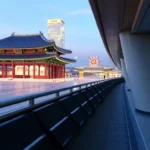
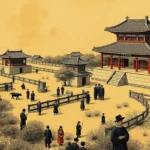
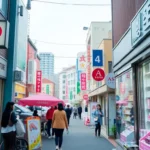
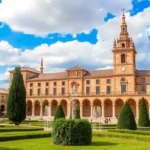
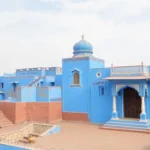
Deja una respuesta